
The Golden Temple
Order Fine Art Print
I am often asked what my favorite sacred places are in the world, among the many hundreds I have visited. I could not choose one in particular, but included in the top ten would certainly be the Golden Temple. It is a place of both stupendous beauty and sublime peacefulness. Originally a small lake in the midst of a quiet forest, the site has been a meditation retreat for wandering mendicants and sages since deep antiquity. The Buddha is known to have spent time at this place in contemplation.Two thousand years after Buddha's time, another philosopher-saint came to live and meditate by the peaceful lake. This was Guru Nanak (1469-1539), the founder of the Sikh religion. After the passing away of Guru Nanak, his disciples continued to frequent the site; over the centuries it became the primary sacred shrine of the Sikhs. The lake was enlarged and structurally contained during the leadership of the fourth Sikh Guru (Ram Dass, 1574-1581), and during the leadership of the fifth Guru (Arjan, 1581-1606), the Hari Mandir, or Temple of God was built. From the early 1600s to the mid 1700s the sixth through tenth Sikh Gurus were constantly involved in defending both their religion and their temple against Moslem armies. On numerous occasions the temple was destroyed by the Moslems, and each time was rebuilt more beautifully by the Sikhs. From 1767 onwards, the Sikhs became strong enough militarily to repulse invaders. Peace returned to the Hari Mandir.
The temple's architecture draws on both Hindu and Moslem artistic styles yet represents a unique coevolution of the two. During the reign of Maharaja Ranjit Singh (1780-1839), Hari Mandir was richly ornamented with marble sculptures, golden gilding, and large quantities of precious stones. Within the sanctuary, on a jewel-studded platform, lies the Adi Grantha, the sacred scripture of the Sikhs. This scripture is a collection of devotional poems, prayers, and hymns composed by the ten Sikh gurus and various Moslem and Hindu saints. Beginning early in the morning and lasting until long past sunset, these hymns are chanted to the exquisite accompaniment of flutes, drums, and stringed instruments. Echoing across the serene lake, this enchantingly beautiful music induces a delicate yet powerful state of trance in the pilgrims strolling leisurely around the marble concourse encircling the pool and temple. An underground spring feeds the sacred lake, and throughout the day and night pilgrims immerse themselves in the water, a symbolic cleansing of the soul rather than an actual bathing of the body. Next to the temple complex are enormous pilgrims' dormitories and dining halls where all persons, irrespective of race, religion, or gender, are lodged and fed for free.
Amritsar, the original name of first the ancient lake, then the temple complex, and still later the surrounding city, means "pool of ambrosial nectar." Looking deeply into the origins of this word amrit, we find that it indicates a drink of the gods, a rare and magical substance that catalyzes euphoric states of consciousness and spiritual enlightenment. With this word we have a very clear example of the spirit, power, or energetic character of a particular place becoming encoded as an ancient geographical place name. The myth is not just a fairy tale. It reveals itself as a coded metaphor if we have the knowledge to read the code: The waters of Amritsar flowing into the lake of the Hari Mandir were long ago - and remain today - a bringer of peacefulness.
Hari Mandir, Amritsar, India
Order Fine Art Print
Sikh pilgrims at the Golden Temple, Amritsar, India
(Order Fine Art Print)
Tuesday, August 31, 2010
The Golden Temple
Posted by
Spicy foods
at
6:27 AM
0
comments
![]()
Labels: Amritsar, Golden Temple, Hari Mandir, India, Sikh pilgrims
Indian Temple Architecture
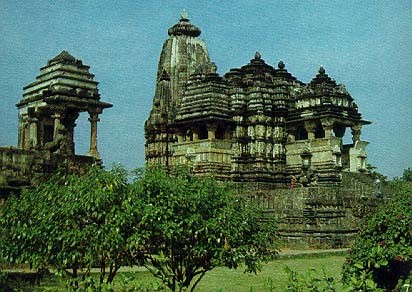

Chennakesava Temple, Belur - Karnataka
The type of raw materials available from region to region naturally had a significant impact on construction techniques, carving possibilities and consequently the overall appearance of the temple. The soft soap-stone type material used by the Hoysala architects of the twelfth and thirteenth centuries allowed sculptors working in the tradition of ivory and sandalwood carving to produce the most intricate and ornate of all Indian styles. Hard crystalline rocks like granite typical of the area around Mamallapuram prevented detailed carving and resulted in the shallow reliefs associated with Pallava temples of the seventh and with centuries. In areas without stone, such as parts of Bengal, temples constructed of brick had quite different stylistic characteristics.
Posted by
Spicy foods
at
6:23 AM
0
comments
![]()
Labels: Hindu temple, indian famous temples, Indian Temple Architecture, Lomas Rishi cave in the Barbar Hills, North Indian Temples
Sun Temples in India
There is an ancient Sun temple at Gaya in the state of Bihar. Offerings to the ancestors are made at the Surya Kunda or the Dakshina Maanas tank in front of the temple. Sun worship apparently was very popular in the Magadha region which included Gaya. Numerous old images of the Sun God Aditya are found in the Gaya region and there are still quite a number of sun worshippers in Gaya. It is said that they may have descended from the fire worshippers of Central Asia. In fact, the granite image of Aditya (this particular image here is also referred to as Dakshinaarka) or the Sun God worshipped here is portrayed as wearing a jacket, a waist girdle and high boots in the Iranian tradition. Hundreds of people visit this temple on Sundays.
The Brahmanya Dev (Baramju) temple dedicated to the Sun is located at Unao near Jhansi in Madhya Pradesh. It is a well visited temple. Local belief is that worshippers find relief from ailments such as blindness and leprosy and other skin diseases. The stone image of the Sun God stands here on a brick platform covered with black plates. Twenty one triangles representing the 21 phases of the sun are engraved in the shrine.There is a protective brass cover for the image. Sunday is the special day of worship. This temple was patronized by the Peshwas and by the ruler of Datia, a nearby town.
This relatively modern Sun temple in the vicinity of the Surya Pahar Hill near Goalpara in Assam. This temple enshrines a circular stone tablet having 12 images of Aditya in a circle with an image of Kashyapa the father of Aditya in the center. Surya is said to be the son of Aditi and Kashyapa (Prajapati or the creator of beings). Each of the Adityas os one faced and two armed. According to the Puranas the Adityas are 12 in number. The text Kalika Purana mentions Surya mountain, the perpetual abode of the sun. Sun worship was present in early Assam. Surya Pahad is referred to as a virtual gallery of archeological remains. At the foot of the hill, covering a vast area there are found a good number of Siva lingams cut out of stone.In addition, Surya Pahar ruins contain many rock cut figures of artistic merit.
This ancient temple dedicated to the Sun is located near Kumbhakonam in Tamilnadu. Kumbhakonam and its surroundings abound in huge temples. This well known temple enshrines the Sun - Surya, Kasi Viswanatha and Visalakshi, and the other eight celestial bodies namely Chandran, Angarakan, Budhan, Brihaspati, Sukran, Saniswaran, Rahu and Ketu. An elaborate worship protocol is prescribed for pilgrims visiting here, starting with worship at the shrine of Ganesha, culminating in circumambulating the temple nine times. This temple built in the Dravidian style is over eight hundred years old and was patronized by the Imperial Chola Kings. This temple is located in close proximity to Kanjanur, and Tirumangalakkudi housing 1200 year old temples to Shiva. Suryanaar Koyil has acquired a lot of popularity in recent times, and is one of the pivotal points in the Navagaraha Stala Tour organized by the Tamilnadu Tourist Development Corporation.
This is a shrine of the Sun in a well preserved state. The temple dates back to the 7th century and a Kalinga king is said to have constructed it. The image of worship is a 5 ft tall one of black granite holding lotus buds - flanked by Usha and Chhaya. Padmapani is the name of this Sun God - padma stands for wisdom usha and chhaya stand for eternity. This shrine is located near Srikakulam in Andhra Pradesh.
This is a grand temple to the Sun God concieved and built in 1026. As in the Sun Temple at Konark, this temple was so designed that the rays of the Sun would fall on the image of Surya at the time of the equnoxes. Whatever remains of this temple is grand; the shikharas are notaby absent but the Toranas in the frontal halls, and the intricate carvings in the exterior speak of the splendour of this shrine, which still is home to the Modhera dance festival featuring dance celebrities in performance in a natural setting. Ruins of the sun temple at Modhera in Gujarat show a lot of Magha influence. The walls of the temple have representations of the sun god wearing a peculiar West Asian belt and boots as in the Sun temple at Gaya. Mention must also be made of the huge tank in front of the temple with its multitude of images.
The Sun Temple at Konarak, Orissa
The grandest and best known of all Sun temples in India is the Konark temple in Orissa. This
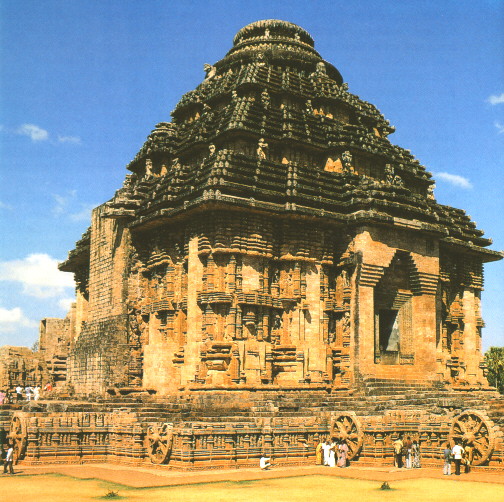 dates back to the 13th century and it represent the highest point in Orissan temple architecture. Konark is situated 20 miles to the north east of Puri. The word Konark means corner sun.
dates back to the 13th century and it represent the highest point in Orissan temple architecture. Konark is situated 20 miles to the north east of Puri. The word Konark means corner sun.
Posted by
Spicy foods
at
6:15 AM
0
comments
![]()
Labels: nava graha temples, Sun Temples in India
Thursday, April 29, 2010
Temples of the Himalayas
Temples of the Himalayas Since time immemorial, the mighty Himalayas have been revered as the abode of divinity. Hundreds of shrines dot the Himalayan foothills and the lofty ice clad peaks. Most of these shrines are very closely associated with the epics that form the backbone of Indian culture and ethos.
Temples of the HimalayasHaridwar - where the Ganges is revered. VisitHaridwar in the foothills of the Himalayas and experience the Aarti to the Ganges, when the entire riverside is lit up with the glow of hundreds of lamps. 
Rishikesh - Gateway to the Himalayas. Experience the might of the Ganges and the serene atmosphere ofRishikesh where all Himalayan pilgrimages begin. Badrinath - This ancient pilgrimage shrineBadrinath is revered all over India. Thousands throng to visit this temple which is open only for 6 months in a year. Kedarnath - the Northernmost of the Jyotirlingas. Kedarnath, nestled in the snow clad Himalayas is an ancient shrine rich in legend and tradition. It is accessible only on foot, six months in a year. Joshi Mutt: Jyotir Mutt, cradled in the Himalayas is one of the pilgrimage sites in the Tehri-Garhwal region and is home to the first mutt established by Aadi Sankaracharya. Devaprayag: The ancient pilgrimage center ofDevaprayag in the Himalayas is at the confluence of the rivers Alaknanda and the Bhagirathi. Kailash - The call of Tibet.Kailash has been revered as the Abode of Shiva. An arduous trek through the snow clad Himalayas takes piligrims to Manasarovar lake and to Mount Kailash. Amarnath - trek through Kashmir. Amarnath yatra - the pilgrimage to Amarnath in Kashmir takes place in the solar month of Leo, when the icy Shivalingam reaches its fullest size on the full moon day. A Himalayan Journey - Part I Experience the grandeur of Badrinath and its environs in the first of a three part series on travel through the Garhwal Himalayas. Salagraama - Nepal: TheSalagrama stones represent Vishnu and are found in plenty along the banks of the Gandaki river in Nepal, hailed as Salagrama, one of the Abodes of Vishnu. The Himalayan Temple Index: Browse through this pointer to several of the revered Himalayan shrines.
Posted by
Spicy foods
at
6:35 AM
0
comments
![]()
Labels: badrinath, haridwar, rishikesh, Temples of the Himalayas
Temples of Karnataka
Temples of Karnataka
|
|
|
Posted by
Spicy foods
at
6:19 AM
0
comments
![]()
Labels: a sculptors dream lived in stone, Bhoganandeeswara, Somnathpura, Temples of Karnataka
Tuesday, March 9, 2010
Tirupati
Significance: Tirupati/Tirumala is a pilgrimage center of great significance and is visited by hundreds of thousands of pilgrims throughout the year.Venkateswara, or Srinivasa or Balaji as the presiding deity Vishnu is known, is enshrined in this temple, located on a range of the Eastern Ghats, called the Seven Hills.It is an ancient temple and its glory has been sung by the saints of the yesteryears. Said to be the richest temple in India, this temple is a vibrant cultural and philanthropic institution with a grand history spanning several centuries. It attracts pilgrims from all over the country and it is not unusual for pilgrims to stand in line for hours together to obtain a glimpse of the presiding deity for a few fleeting seconds. TTD, or Tirumala Tirupati Devasthanam manages the affairs of the temple, the well being of the pilgrims, the upkeep of the environs in and around the Tirumala hills and sponsors several undertakings that are religious, charitable, social and educational in nature. References to Tiruvenkatam abound in early Tamil literature(Tolkappiam and Silappadikaram) . Explicit reference to the Lord of Tiruvenkatam is found in the works of the early Tamil Saint Poets Poigai Alwar, Bhuthathu Alwar and Pay Alwar as well as in the poems of the later Alwars. The great religious leader Ramanuja Acharya is said to have visited here in the 11th - 12th century AD. References to Venkatachalam are also found in several of the Puranas. Tirumalai constitutes one of the 108 Sri Vaishnava Divya Desams - sacred shrines in the Sri Vaishnavite tradition.Krishna Deva Raya of the Vijayanagar Empire is said to have visited this temple 7 times. An image of his is also found in the temple. The Venkatesa Itihasa Mala and the Varaha Puranacontain several legends connected with Tirumalai. Location: Tirupati is a town in the Chittoor district of the Southern portion of Andhra Pradesh and is at a convenient train journey away from Chennai (formerly Madras) in Tamilnadu. Tirumalai, on the last of the seven Hills, is home to this temple and is connected by a well maintained and picturesque mountain road constructed by the Tirumala Tirupati Devastanam.
Posted by
Spicy foods
at
5:35 AM
0
comments
![]()
Labels: Andra pradesh, lord venkateshwara, most visited pilgrimage, tirumala tirupathi
Temples of Tamilnadu
Thousands of temples with lofty towers dot the skyline of the entire state of Tamilnadu. The Tamils have been the greatest of temple builders. Temples from the pre Christian era as well as those from the 20th century exist in this state, where the ancient rulers have made outstanding contributions to the growth of these monuments of great artistic value. The most ancient temples were built of brick and mortar. Upto about 700 CE temples were scooped out of rocks. The Pallava Kings (upto 900) were great builders of temples in stone. The Cholas (900-1250 AD) have a number of monuments to their credit. Mention must be made of the Brihadeeswarar Temple in Tanjavur. The Cholas added many ornate mandpams or halls to temples and constructed large gopurams - towers. The Pandya Style (Upto 1350 AD) saw the emergence of huge towers, high wall enclosures and enormous towered gateways. The Vijayanagar Style (1350 - 1560 AD) is noted for the intricacy and beauty especially for the decorated monolithic pillars. The Naik style (1600 - 1750 AD) is noted for the addition of large prakarams (circumambulatory paths) and pillared halls. The above is a rather terse description of the Dravidian temple styles found in Tamilnadu. The age of a temple could be determined from the architectural features exhibitied by it, as well as from references to it in ancient literature. The Sangam period literature of the pre Christian era refers to some temples. The songs of the revered Saivite Saints (Nayanmars) and the Vaishnavite Alwar Saints that date back to the period 7th to the 9th century CE provide ample references to the temples of those days, and these are a valued source of reference in estimating the age of temples. In addition, stone inscriptions found in most temples throw a lot of light on the history , and on the patronage extended by various rulers. 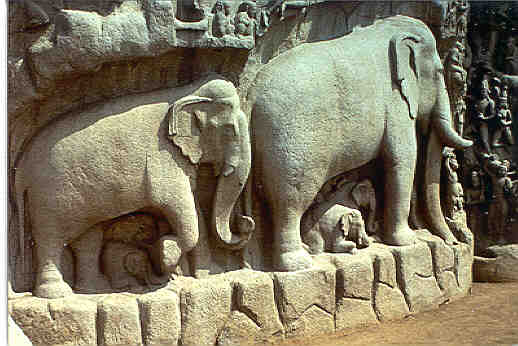
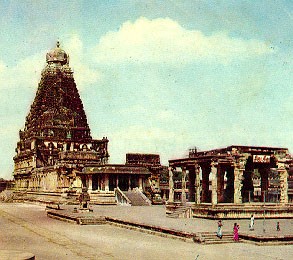
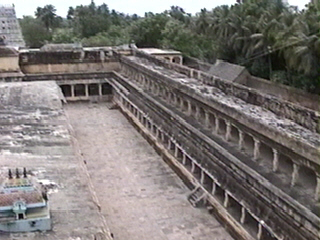
Posted by
Spicy foods
at
5:33 AM
0
comments
![]()
Labels: ancient temples, cholas, pallavas, pandiyas, Temples of Tamilnadu
Wednesday, March 3, 2010
World's 12 Fascinating Temples


2. Wat Rong Khun, Chiang Rai, Thailand



3. Prambanan, Central Java, Indonesia



4. Shwedagon Paya, Myanmar



5. Temple of Heaven, Beijing



6. Chion-in Temple, Japan



7. Borobudur, Java, Indonesia



8. Harmandir Sahib, Golden Temple, Punjab, India



9. Temple of Srirangam, Tiruchirapalli, India



10. Angkor Wat, Angkor Thom, Bayon, Cambodia



11. Potala Palace, Jokhang Temple, Tibet



12. Varanasi, India



Posted by
Spicy foods
at
6:15 AM
0
comments
![]()
Labels: great temples, wonderful world, World's 12 Fascinating Temples













